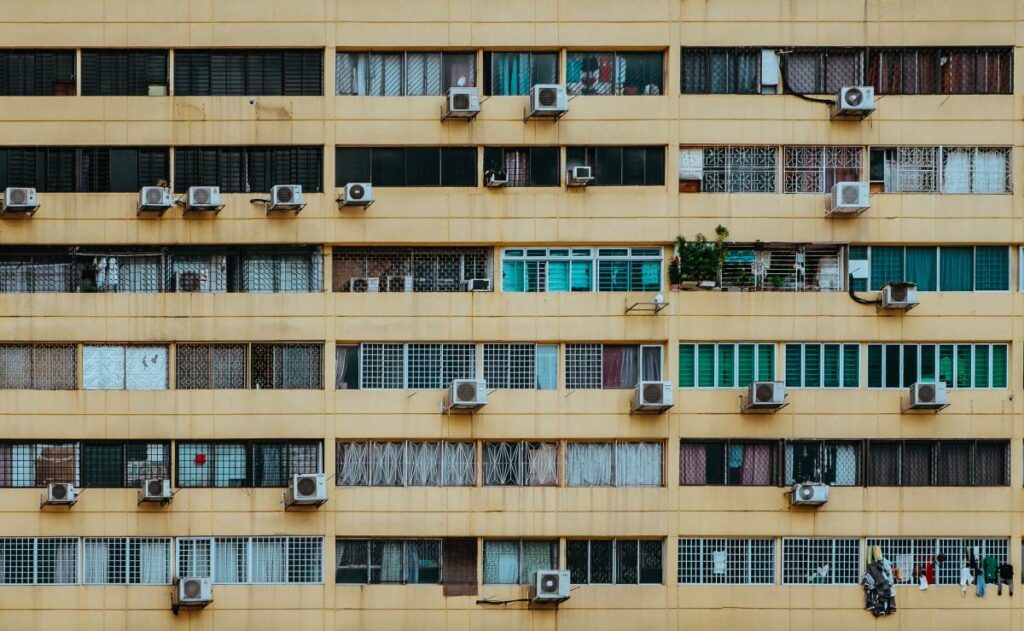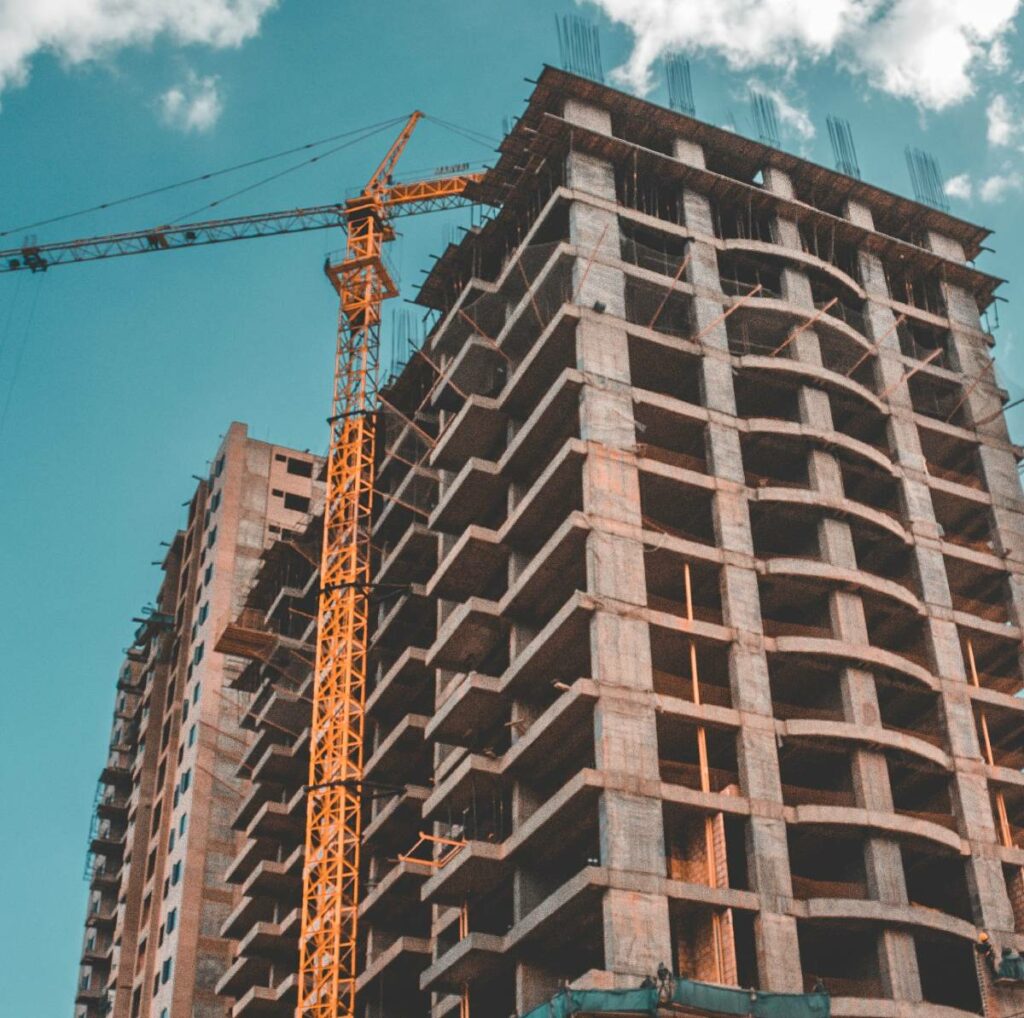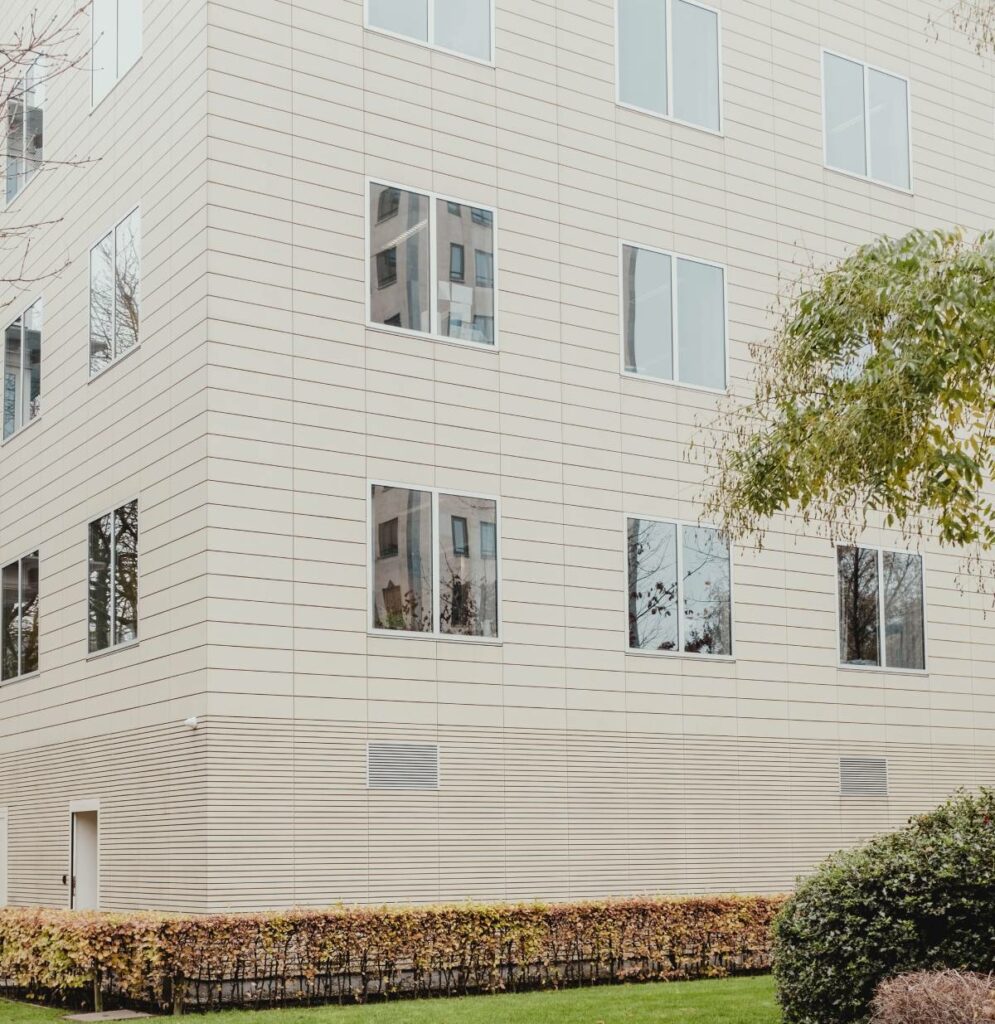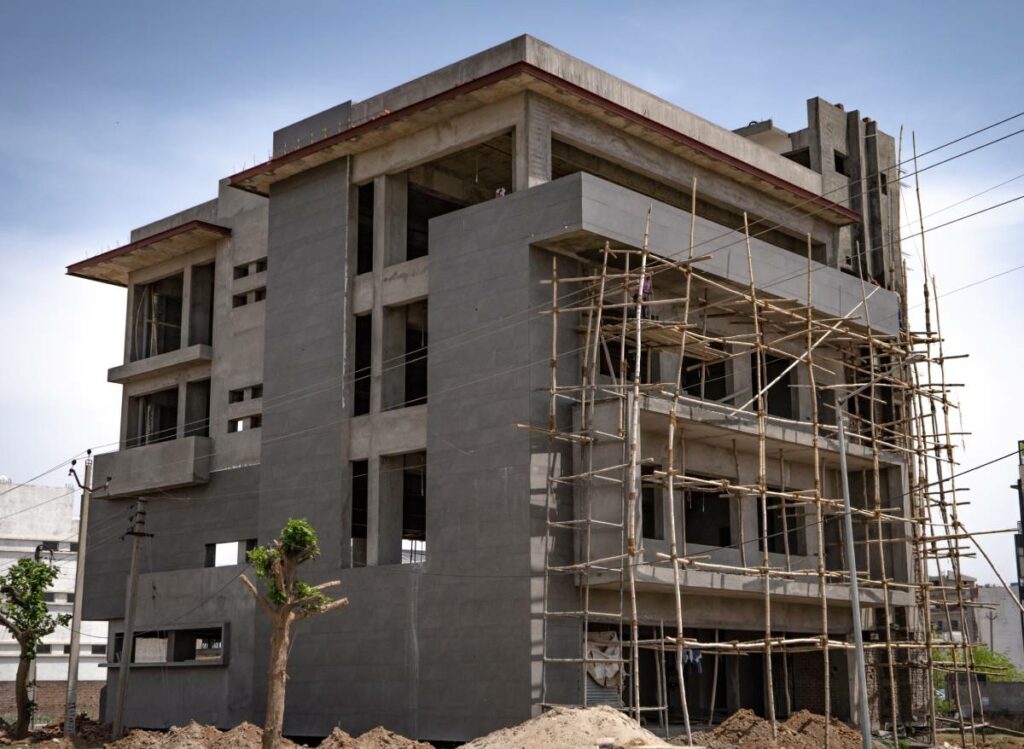Horizontal Property Law in Spain
The real estate industry is one of the largest in the world. Therefore, you need to make a proper assessment when it comes to property ownership. That’s because there exist several regulations that guide property ownership, such as the horizontal property law in Spain.
But what exactly is the horizontal property law? Specifically, what is the horizontal law in Spain? Horizontal property in Spain is a condominium or another type of property, whereby individuals own portions of property separately and then own other portions of that property together.
The horizontal property in Spain allows units within one building to be owned and sold separately. It enables the owners of these units to possess a common right in a common area of the property and building. However, you need to know that each region has specific laws regarding the horizontal property.

That’s where we come in. Our law firm offers legal advice to ensure that you’re well-acquainted with Spanish property law. Most of our clients want to know, what is the horizontal property Act? We ensure to provide them with a legal representative who can guide them in all matters, including the Spanish Building Regulations.
So, would you like to own a horizontal property in Spain? Read on to learn more about it, and the regulations surrounding horizontal properties in the country.
The Law of Horizontal Property Ownership

If you want to own property in Spain, then you need to acquaint yourself with all the regulations. Several laws cover the obligations and legal rights of property owners. They are contained within the Spanish Civil Code, and in this case, this law is referred to as the Law of Horizontal Ownership.
This law applies to and covers terraced and detached properties. It also applies to apartments whose ownership can be interpreted as vertical and horizontal. Technically, there are sections of a building that are jointly owned. They mainly include communal areas such as swimming pools and gardens.
If the owners of the property share the cost of maintaining these areas, then they qualify as horizontal ownership, and they fall under this law. The Law of Horizontal Ownership allows the owners to run the property according to what the majority of the owners desire. It enables the building or property to be run democratically.
However, all communities have their regulations. Consequently, owners have to agree on the fees, and each area of the property is clearly defined. That means that a community property should indicate the areas that are jointly owned, and those that feature sole ownership.
Additionally, every owner in the community has a share, which is based on the size they own. The shares are essential because they determine how much owners will pay to maintain the common area. Such properties also have a president of the community to coordinate the members.
Do you want to live in Spain?
Our law firm has more than 15 years of experience.
Moreover, the members are required to pay certain fees for essential services, including paying receptionists and gardeners. The amount paid also depends on the size, services, and facilities in the community. Needless to say, the larger the property and amenities, the higher the fee.
The Spanish horizontal property law dictates that the rights and needs of the owners be represented by an Owners Association. The association ensures everything flows seamlessly within the community. Additionally, it must have an administrator and president of the community who are elected annually. There’s also a committee of owners.
Usually, a general meeting gets held every year, whereby the owners debate the affairs of the community. During the meeting, the members carry out the appointment of the administrator and president. Furthermore, they set the budget for the coming year.
The Structure of the Community Owners

In Spain, the communities of such owners are regulated by the Horizontal Property Laws. However, such communities in Catalonia are regulated by the Catalonian Civil Code. But they all have specific statutes. The statutes of the community ensure that the owners adhere to the regulations.
Normally, the community is created by all the owners of commercial properties, homes, and other units that can be used independently with their communal areas within the building or urbanization, or their exit to the public highway.
To ensure everything runs accordingly, these communities of owners have a specific structure. They include:
- The President and Vice Presidents
- The Secretary
- The Administrator
- The Meeting of the Community of Owners
The President has to be among the property owners, and they are usually elected annually either by a draw of lots or by ballot. Whoever gets the majority vote wins. The President acts as the legal representative of the owners within the community and in court. However, the President could get excused from their position once they provide a valid reason before a court.
The vice president’s post is not mandatory. However, those communities that agree to elect a vice-president have to follow a similar process for electing a President. The members usually vote at the meetings.
Moreover, the President can exercise the roles of secretary and administrator. But there’s an exemption if this is prohibited at the meeting, or if the statutes of the community dictate so. Similarly, the roles of secretary and administrator can be taken up by a single individual. This person doesn’t necessarily have to be one of the owners.
In such cases, our law firm advises the owners to look for a professional to undertake these roles. Usually, we recommend a Registered Estates Administrator for the role. Alternatively, the owners can look for another business that involves itself with such an activity. Over time, we’ve discovered that outsourcing these roles works best for the communities. As such, owners should rely on local Property Law Experts for the same.
Do you want to live in Spain?
Our law firm has more than 15 years of experience.
The officers of the communities need to be named within one year, except when a community’s statutes state otherwise. Here are some of the other roles within horizontal properties.

Administrator’s Roles
- To protect and ensure that the property and its installations function properly
- Cater to the maintenance of the building and property by handling any repairs and installations that are urgently needed
- Preparing the communities’ budgets, including the running costs, and submitting them t the meetings of the communities of owners.
- Overseeing all the tasks that require to be undertaken, including the remuneration of workers such as gardeners and receptionists.
- Serving as the secretary to the meeting of owners when nobody else has been assigned this role.
Roles of the Meeting of the Community of Owners
- Appointing all the officers of the community
- Approving any proposed refurbishments that need to be undertaken
- Approving the income, accounts, and foreseeable costs of the community
- Approving and updating the statutes and other regulations of residing within the community
- Proposing and deciding on matters of interest to their community
From these roles, you can attest that the property owners make a majority of the decisions. Besides, they can decide and agree upon how to run the community.
Where Does the Horizontal Property Act Apply?

Different properties are regulated by different laws. Similarly, the Horizontal Property Act in Spain applies to specific properties. It applies to those properties that are situated within a residential urbanization, which share common facilities like swimming pools, lifts, gardens, and walkways.
The residents in these properties are collectively responsible for the maintenance costs of these properties, as well as the payment of employees. You must also keep in mind that this Act has changed severally over the years. As a result, you need to seek legal representation to understand how the civil code has changed compared to previous years.
Working with Property Law experts such as our company helps you avoid any liability, especially if you’re a buyer. Legal experts will ensure that the property you’re getting is up-to-date, especially regarding the payment of community fees. You also need to know what part of the building is community-owned and those that are for sole ownership.
To determine that the payments have been completed, you must be issued a certificate by the administrator of the community. Moreover, the certificate has to be approved by the president, and the document has to be attached to the title deed.
Lacking this certificate places you at risk of being responsible in case of a community debt accrued by the vendor during the time of completion and three years before the purchase. Adherence to this law mitigates difficult financial situations that might face such properties.
In previous years, some owners used to default on payments. This could deter certain buyers or even place some in difficult financial situations. Fortunately, this changed because of reforms to the law in 2013.
The new law changed the length of time for which a buyer is responsible for the payment of the arrears (community fees) on the acquired property. Before that, the buyer was responsible for the debts from the current year and the previous year. But with the new law, this period was extended to incorporate the current year and three years prior.
Important Provisions in the Spanish Horizontal Property Law
Chapter 1
In section 1, the horizontal law regulates the special form of property that was established in Article 396 of the Civil Code. It is referred to as horizontal property. It enforces the Spanish System for regulating the joint ownership of common property.
Do you want to live in Spain?
Our law firm has more than 15 years of experience.
Chapter 1 defines the purpose of this law and those it covers. These include parts of a building, which are subject to independent use. These parts are defined by a common element, which might be an exit or public area of the property. This chapter has two sections – 1 and 2.
Chapter 2
Chapter 2 of this Act has numerous chapters. This chapter mainly deals with the system of ownership of individual units in multiple-unit buildings. The chapter covers sections 3 to 23, and we’ll briefly go through each section in this article.
Section 3 stipulates the terms of separate individual ownership of flats. It also sets the terms for the joint ownership of communal areas. The article dictates that horizontal property owners may not subdivide their property, but if the community gives consent, then the owners can subdivide the property into smaller units.
Section 4 provides clarification that any action of subdividing a building should not affect it, in general, being regulated by this law. The action may only be carried out by each undivided owner on a specific unit or property, providing that the provision hasn’t been determined as an attempt for communal utilities of all owners.
Section 5 sets out the terms that each owner’s share or cuota is fixed, especially in a community that is legally registered and constituted. This can only be changed by a unanimous vote of all the members of a community. This article also confirms that the private statutes of the community aren’t binding, except for part of the registration of the building.
The description of each building must include its size, floor where it’s located, boundaries, attic, basement, or garage space. The master title deed must also comprise rules and regulations regarding the exercise of rights, as well as other provisions not prohibited by the law concerning the use of the building, its units, and facilities.
Section 6 helps to regulate the co-existence, as well as the proper use of the common elements and services. It stipulates that members of the community can make internal rules that are approved by a majority vote.
Section 7 protects the members of the community from problematic owners. That notwithstanding, it limits the owners’ rights by only allowing them to alter the interior of their properties. But even when making the alterations, they should not alter the structure’s appearance or threaten its safety. This article prohibits the closing in of terraces.
Section 8 deals with the physical division of horizontal properties or units. It states that these units may be physically divided to create other smaller, independent units. The units can be reduced by the segregation of constituent parts, and they can be enlarged by aggregating adjoining units. The general assembly must approve these actions.
Section 9 stipulates the duties of unit owners. They include:
Do you want to live in Spain?
Our law firm has more than 15 years of experience.
- To respect general installations
- To maintain their flats or units to excellent standards
- To allow repairs in their flats and other maintenances required for the building
- To enable entry into their flats for a, b, and c
- To pay the required community fees in full
- To contribute to the community’s reserve fund. This fund must be at least 5 percent of the community’s operating budget.
- To exercise care in the use of their property, as well as in relations with fellow owners
- To notify the community where they should send their communications
- To provide notifications in case of change of ownership
Section 10 is concerned with the work necessary for the maintenance and upkeep of the buildings. The community is obliged to carry out these works to ensure the building and its facilities are in proper working condition. The community must also carry out works on units for people with disabilities or seniors to promote accessibility. Owners who exercise opposition or cause delays in these tasks must be held accountable and could face administrative sanctions. The expenses incurred must also be included.
Section 11 stipulates that no unit owner can demand unnecessary improvements. Although some resolutions may be adopted, the cost should not exceed the usual common expenses for three months. Those who wish to enjoy the benefits of these improvements may need to share in the cost of installation and maintenance.
Section 12 states that for major modifications to the structure of the buildings to get carried out, the members of the community have to vote unanimously. This mostly applies to common elements that affect the master deed.
Section 13 focuses on the governing bodies, their election, and duties. They include:
- The owner’s general assembly
- The president and vice-presidents
- The secretary
- The administrator
We’ll not dwell much on this section as we’d previously discussed the roles of each of these governing bodies.
Section 14 includes the roles and functions of the general assembly
Section 15 covers the attendance of meetings and the voting by proxy. The section also stipulates several statutes for the general assembly, whereby it prohibits debtors within the community from voting, but they can get listed for each member’s information.
Section 16 mentions that a general meeting has to legally take place at least once a year. However, the only issue of business that’s legally needed is the approval of the budget and accounts. The article further states that the elections for the President aren’t necessarily strict because the office of the President usually continues until they get replaced by a majority vote.
This article also concerns itself with the requirements for calling an emergency general meeting. It stipulates that these meetings can be called by the president at any time. Alternatively, emergency meetings might get held when one-quarter of the cuotas requests it.
Section 17 covers the rules that guide the resolutions of the owners’ general assembly. It states that unanimity is only needed for the validity of the resolutions involving the amendment or approval of rules in the community statutes or the master deed. Regulations that are legally adopted under the provisions of this rule are binding to all unit owners.
Do you want to live in Spain?
Our law firm has more than 15 years of experience.
It also covers the installation of common infrastructure that provide access to telecommunication services. Members that did not consent to the installation of these infrastructural facilities will not get charged. This section also states that all resolutions shall be adopted with the vote of a majority.
Section 18 stipulates that the resolutions of the owners’ general assembly can get challenged in court based on the provisions of the overall procedural law. It also states that unit owners who dissented to the resolutions and those who were illegally deprived of their right to cast votes can challenge them. Also, if a resolution gets challenged in court, its implementation doesn’t get suspended, unless the judge establishes it as a precautionary measure.
Section 19 is concerned with the keeping of an official minutes book. Being a legal document, it is required to be written in Spanish and should be stamped and validated by the Land Registrar. The President and the secretary have to sign the minutes at the end of each meeting to officiate it.
Section 20 mentions the official roles of the administrator. We had covered the administrator’s functions in a section above; therefore, we’ll not list them once more here.
Section 21 points out the procedure that the community should follow in case an owner fails to pay the required community fees. It stipulates that the community could certify the accrued debt and immediately head to court to apply for a lien against the debtor’s property.
Should the debtor fail to pay, the presiding judge will order the seizure of their assets. However, when the debtor contests the bill, they must lodge a bank guarantee or assets for the amount contested. Any community debt that accumulates during this period gets added to the original debt. If the debtor pursues the case further and loses, he or she must cater to the community’s legal costs.
Section 22 states that the community of owners’ assembly is liable with all its assets for debts to third parties, such as suppliers. However, the creditor can claim for specific unit owners, especially those who were partisan to the process. Members that have paid in full can’t be forced to pay.
Section 23 focuses on the termination of the horizontal property in Spain. Termination occurs when a building gets destroyed or sold.
Chapter 3
This chapter focuses on the regime of private real estate developments. This chapter only has one section.
Do you want to live in Spain?
Our law firm has more than 15 years of experience.
Section 24 affirms that the law of Horizontal Property in Spain takes account of groupings of townhouses, urbanization of detached houses, detached villas, and flats. The act provides total protection for such properties notwithstanding. There are also other provisions, which include the creation of the reserve fund when these communities meet certain specifications.
How can a copy of the Master Deed of a community be obtained?
Donald,
One of our lawyers will contact you to answer your questions.
Regards,
Our Statutes say ‘Those relating to the whole Community or to one of its elements will be shared proportionately amongst the proprietors in accordance with the allocation of participation quotas. The Community contributions will be paid in advance each semester. Any account not paid within 30 days will incur an interest charge of 4% p.a. above ruling bank rate’ That means payments for the first 6 months of the year have to be paid by 30th January, after which they become ‘Debts’. We have been advised by our administrator that according to the LHP the first 6 months payment only becomes due after the Invoice for the second 6 months has been issued. Is this correct please?
David,
One of our lawyers will contact you to answer your questions.
Regards,
Is it legal to organize the Annual Meeting of the Community of Owners both physically and electronically? Or does one have to attend this meeting in person only? Is there a difference between the Spanish mainland and the Canarian Islands concerning this issue?
Mario,
Normally it is done in person, but I suppose it could be done remotely, it’s just a matter of talking it over.
Regards,